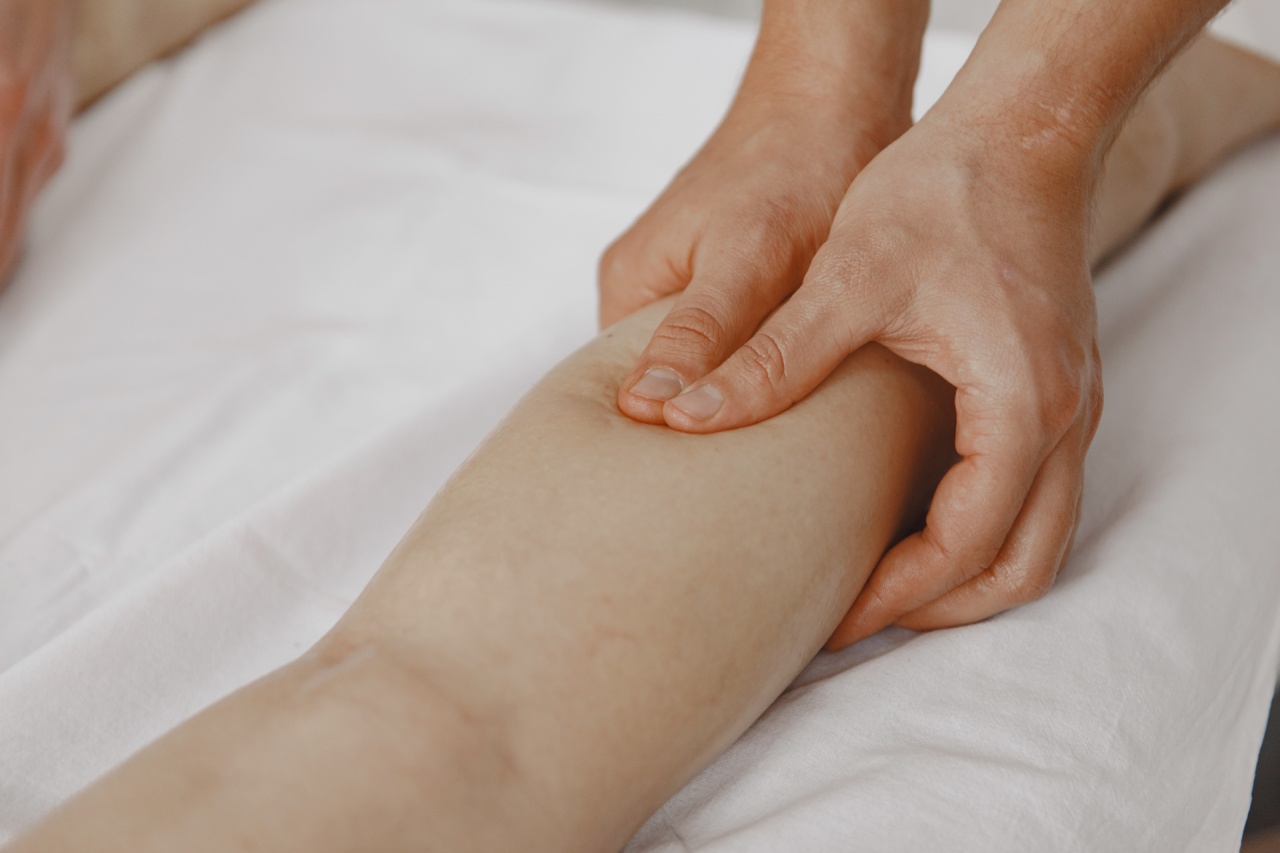Muscle spasms are involuntary contractions of skeletal muscles that occur suddenly and without warning. They can be painful and disruptive, and can range in severity from mild twitches to full-blown cramping.
In this article, we’ll take a closer look at what causes muscle spasms and what you can do to prevent and treat them.
Causes of Muscle Spasms
There are several factors that can lead to muscle spasms, including:.
1. Dehydration
When your body is dehydrated, your muscles may contract involuntarily. This is because water is essential for the proper functioning of your muscles, and when it’s in short supply, they can become tighter and more prone to cramping.
2. Electrolyte Imbalances
Your body relies on a delicate balance of electrolytes such as potassium, sodium, and magnesium to ensure that your muscles function properly.
When this balance is disrupted, especially in cases where there is a shortage of electrolytes, muscle spasms can occur.
3. Overuse of Muscles
Muscles that are overworked or underworked can become fatigued or irritated, leading to spasms. This is especially common in athletes or people who engage in repetitive physical activity.
4. Nerve Damage
In some cases, nerve damage can cause muscle spasms. When nerves that control the muscles are damaged or irritated, they may fire erratically, leading to involuntary contractions.
5. Medical Conditions
Certain medical conditions such as multiple sclerosis, Parkinson’s disease, and spinal cord injuries can increase the risk of muscle spasms.
Treatment of Muscle Spasms
If you experience muscle spasms, there are several things you can do to relieve the symptoms and prevent them from happening again. Here are some of the most effective treatments:.
1. Stretching
Gentle stretching exercises can help to relieve muscle spasms by lengthening the affected muscles and improving blood flow. Stretching before and after physical activity can also help to prevent spasms from occurring in the first place.
2. Massage
A gentle massage can help to relieve muscle tension and reduce the frequency and severity of spasms. Professional massage therapy can be especially effective, as it can help to identify and target areas of tension and inflammation.
3. Hydration and Electrolyte Replacement
Drinking plenty of water and replenishing lost electrolytes can help to prevent muscle spasms caused by dehydration or electrolyte imbalances. This is especially important if you engage in physical activity or live in a hot climate.
4. Medications
Over-the-counter pain medication such as ibuprofen or naproxen can help to relieve pain and inflammation caused by muscle spasms. In more severe cases, prescription muscle relaxants may be necessary.
Prevention of Muscle Spasms
The best way to prevent muscle spasms is to maintain a healthy lifestyle and engage in regular physical activity. Here are some tips to help you prevent spasms:.
1. Stay Hydrated
Drink plenty of water and electrolyte-rich fluids such as coconut water to help prevent dehydration and electrolyte imbalances.
2. Get Plenty of Rest
Allow your muscles time to rest and recover after physical activity, and make sure you get enough sleep each night to avoid muscle fatigue and tension.
3. Stretch Regularly
Incorporating regular stretching exercises into your routine can help to keep your muscles flexible and prevent spasms caused by overuse or fatigue.
4. Maintain Proper Nutrition
Eat a balanced diet rich in essential nutrients such as vitamins, minerals, and protein to keep your muscles healthy and strong.
5. Manage Stress
Stress can cause muscle tension and contribute to the occurrence of spasms. Try incorporating relaxation techniques such as meditation or yoga into your routine to help manage stress and prevent spasms.
Conclusion
Muscle spasms can be painful and disruptive, but they are often preventable and treatable.
By taking steps to maintain a healthy lifestyle and engaging in regular physical activity, you can reduce your risk of experiencing muscle spasms and alleviate their symptoms if they do occur.






























